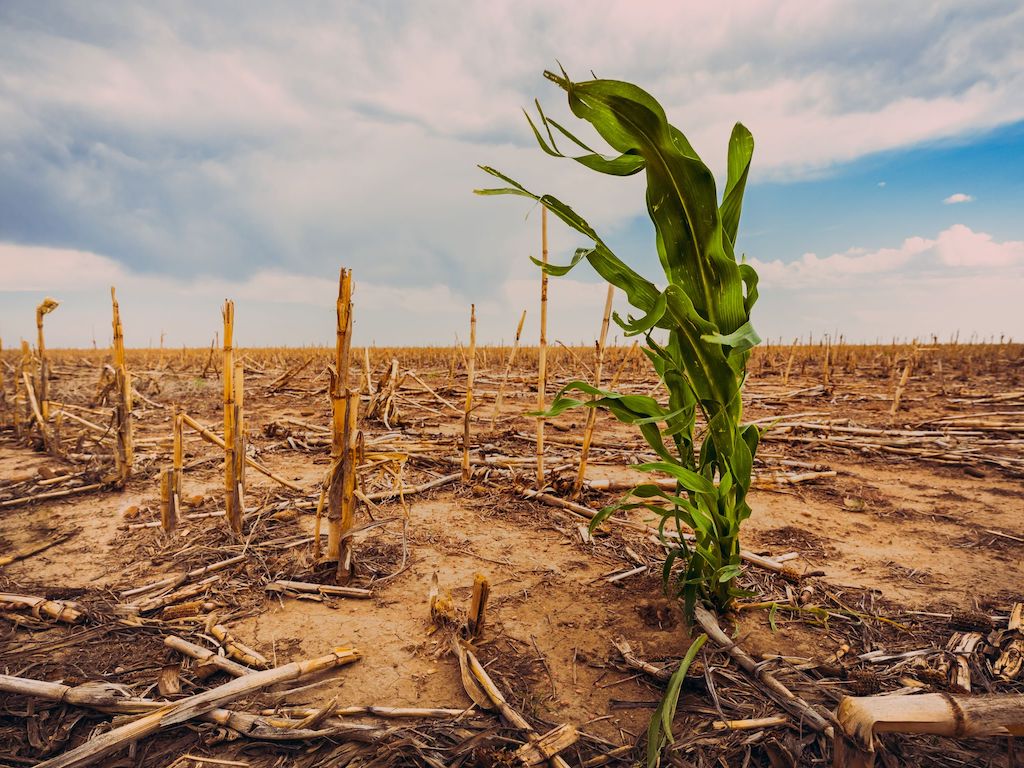5 Mins Read
By: Irina Gerry
We need to rethink our food system and secure a better future. Here’s why.
The first shock came just a couple of months ago with disruption of sunflower oil supply. The world’s largest supplier, Ukraine, was cut off due to armed conflict. Suddenly, food companies worldwide were faced with a supply crunch in a widely-used ingredient and being forced to find supplies of alternate oil and re-work their formulations. Packaged food brands bemoan ingredient swaps because they are costly and extremely hard to implement on such short notice. Formula and packaging changes normally take months to flow through the production system, potentially contributing to inventory shortages and business risk.
Sanctions on Russian oil and gas sent energy prices soaring, resulting in higher fuel costs and food prices across every single category in the US, compounding existing inflationary pressures. In developed markets, consumers got hit by price increases, while in developing world the threat of famine is looming large, as food security experts predict that the world has about 10 weeks of wheat supplies left.
As the conflict in Ukraine has shown, our food system is highly dependent on globally integrated supply chains, which can lead to a domino effect of interruption. Shortages of Ukraine-supplied staples are amplified by sanctions that also disrupt sources of wheat, barley, other food commodities and fertilizer from Russia. A conflict in one area of the globe, rapidly rips through the food ecosystem, resulting in shortages, price hikes and supply disconnects beyond its point of origin.
Protectionism and Food Security Concerns on the Rise
Reacting to looming food commodity shortages, several nations instituted restrictions or bans on key exports, looking to shore up domestic supply. Indonesia announced a ban on palm oil exports. India halted wheat, and Malaysia banned poultry exports. Continued shocks are sending commodity prices skyward, creating a looming crisis not only over this year’s crops, but also threatening the following season.
Given the high concentration of supply of key food commodities among a few sources – e.g. Indonesia supplies 60% of global palm-oil – even the smallest interruption sends global food supply chain into chaos, as most players have structured supply chains in a way that keeps suppliers concentrated, inventories low, and continuous operations dependent on timely deliveries via global routes that go through precarious bottlenecks, which are subject to geopolitical risks.
Disease, Contamination and Pandemic Risk Threaten Tightly Knit Systems
Supply chain challenges seem to be rising at once everywhere. Costco, well-known for their epiphanous rotisserie chicken, battled a major shortage due to the sudden onslaught of rapidly spreading avian bird flu this April. The disease quickly wiped out 15 million chickens.
In a recent Forbes article reporting on the bird flu outbreak, “The way Costco and other factory farms raise chickens—in overcrowded and stressed-out environments—makes it easier for bird flu to spread.”
The United Nations reports that four of seven risk factors for pandemic outbreaks are directly linked to the meat industry and rising meat consumption. According to the Center for Disease Control and Prevention, three out of four emerging diseases are animal-born and could transfer to people.
Pandemic related turmoil that unfolded in meat packing plants last year was exasperated by over-crowded working conditions and subjected employees to undue viral exposure. Inevitable plant shutdowns ensued. The pandemic has also wreaked havoc on trucking, ocean shipping and other infrastructure that moves food from abroad to domestic manufacturers and retailers.
The most recent formula shortage crisis in the US, showed just how concentrated and vulnerable our most critical food supply is, when a single plant going offline due to bacterial contamination snowballed into a 40% drop in baby formula supply, leaving babies hungry and parents scrambling to buy the last few cans from price-gougers online.
The Outsized Threat of Climate Risk
Perhaps the largest potential disruptor of all is climate change. Already droughts and storms are lowering crop yields, reducing some cattle herds and setting up entire regions to battle the depletion of fertile soils.
The growing absence of biodiversity demonstrates how vulnerable the entire food system has become to climate impact. Smithsonian Magazine reports more than 75% of the world’s entire food supply draws on just 12 “mono crops” and five animal species.
California’s almond industry, which provides 80% of the world’s almonds, is in peril due to a 1,200-year mega drought. Continued water shortages in Western US are likely to force the conversation around agricultural water use, especially around the most water-intensive commodities such as meat and dairy, mandating that choices be made to ration the now scarce fresh water supply.
The UN confirms that food commodity risks are accelerating from climate change. This helps set in motion future conditions that presage famine, malnutrition and intensified disparity between north and south regions of the earth – a situation that could spur further global conflict (climate wars), mass migration and economic instability.
Rethinking Where Food Comes From
The new climate and geopolitical reality, coupled with increasing demand from the growing global population, mandate a rethinking of our global food system.
We must decentralize, decouple and diversify our food commodities. We must rethink our agricultural practices, focusing on regenerative models. We must consider environmental impacts of our farming methods and dominant commodity choices. We must move down the food chain in our eating habits, which means more whole fruits, veggies and legumes and fewer animal products. We must also incorporate new food technologies from vertical farming to cellular agriculture, which promise to deliver nutrition at a fraction of the environmental footprint.
Precision fermentation technology is an iconic example of what the next generation of food may look like: nutritious, protein-rich foods, crafted without dependence resource intensive animal agriculture.
Imagine our beloved dairy foods like cheese that are no longer connected to raising, feeding and managing cows for consumption. Precision fermentation replaces the macro-sized cow with micro-sized microbes, programmed to produce dairy proteins. The dairy farm of the future could look a lot like a brewery, where fermentation tanks replace thousands of cows, taking up significantly less land, water and feedstock to produce ingredients like dairy proteins.
Because these production facilities can be constructed anywhere, a more regionalized food supply could open up new economic opportunities in areas where increased animal agriculture is not tenable due to shortages of land or water and offer food independence for nations globally.
New food technologies may help usher in a new food future less dependent on a handful of suppliers and commodities and less vulnerable to uncontrollable conditions such as disease, war, extreme weather and other disruptions that are all but certain to continue.
Irina Gerry is the Chief Marketing Officer at Change Foods, a US-Australian food tech company creating animal-free dairy foods by leveraging precision fermentation technology.
Lead image courtesy of Shutterstock.




